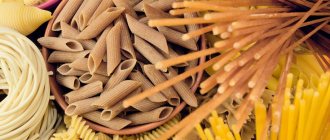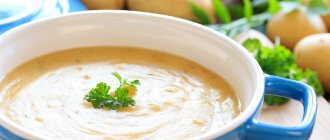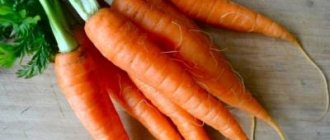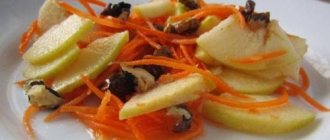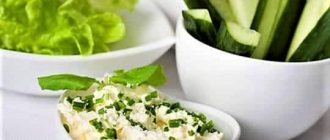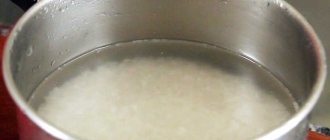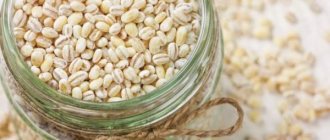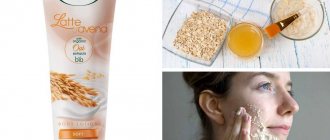Artemi Panarin approves.
In October, hockey player Artemy Panarin, who has been playing in the NHL for 5 years, went home by train: he bought preshirak, vegetables, sausage and had a feast during the 40-hour trip. Noodles seem to be the best train food: it's convenient to brew with boiling water, and you can simply throw away the cup after eating. But they say that noodles are harmful and can ruin your stomach if you eat them constantly. This is true?
Instant noodles: what are they?
According to the idea of the Japanese Momofuku Ando, who invented this wonderful product in 1958, instant noodles are simply chopped dough of wheat flour, water and salt, which is first steamed, and then seasoned and deep-fried to remove excess moisture. Dried noodles shrank in volume and lasted much longer than fresh and frozen noodles. And since it was already boiled, it was very easy to prepare it - just like now, you just had to pour boiling water over it. You can’t do this with regular spaghetti: if you just pour boiling water over it, it won’t have time to cook.
Seasoning packets, dried vegetables and a polystyrene cup in which the noodles could be brewed without transferring them to their own container - a 1971 "know-how" approved by the World Instant Noodle Association (WINA).
Properties of Noodles
Nutritional information | Vitamins | Minerals
How much does Noodles cost (average price per 1 kg)?
Moscow and Moscow region.
70 rub.
Remember the well-known expression - “don’t fool me.” Today we will talk specifically about noodles, the famous pasta product. The noodles have an unusual shape for pasta, which is what makes them different from all other varieties. Long narrow strips of dough made from wheat, buckwheat, bean or rice flour, mixed with water - these are noodles.
Are hamburgers harmful? Is it true that a bun with a cutlet is dangerous to your health?
Since 1997, the Noodle Manufacturers Association has been ensuring that technology is not violated and that the product remains at least safe for health. From our country, WINA includes:
- Mareven Food LLC, noodles of the Petra and Big Bon brands;
- group - makes “Big Lunch” noodles, “Alexandra and Sophia” and noodles with iodized salt “Wow!”
The popularly beloved Doshirak is made by Doshirak Koya LLC and Doshirak Ryazan LLC - Russian subsidiaries of the Korean company Paldo, which is also a member of WINA, only from Korea.
The rest of the Russian producers of instant noodles, which are easiest to find in stores - for example - are not included in WINA. But, like WINA members, they are required to comply with Russian GOST.
According to this GOST, instant pasta itself should be made from premium or first-grade soft wheat flour mixed with salted water. You can add salt, sugar, pepper (ground black, white and red), dried vegetables (onions, garlic, carrots, beets, green peas, corn and parsley), vegetable oils (sunflower, soybean or palm) to the noodles. additives (dyes, antioxidants, emulsifiers, stabilizers, thickeners, acidity regulators, flavor and aroma enhancers).
Let's look at these components in more detail. And in order not to be unfounded, let’s look at the composition of some specific noodles - let it be “Rollton: Vermicelli in homemade broth with mushrooms.” However, you have to take into account that not all the ingredients are indicated on the packaging.
Noodles: These have no vitamins or minerals and very little protein.
One briquette of noodles without packaging weighs 60 g. The manufacturer indicates the nutritional value per 100 g, and it is easy to calculate that the noodles contain 34.2 g of carbohydrates, 5.4 g of proteins, and 12.6 g of fats.
Carbohydrates. 34.2 g – is it a lot or a little? In general, adults, depending on the load, need 257-585 g of digestible carbohydrates per day. But with carbohydrates, not everything is so simple - it’s not enough to take into account weight, you need to keep in mind the glycemic index of a particular product. This is a rating from 0 to 100 that shows how quickly a particular food raises blood glucose levels. The lower the glycemic index, the slower the product is absorbed and the longer the feeling of fullness remains. Foods with a low glycemic index (less than 55) are more difficult to overeat than foods with a high glycemic index (above 55).
It was not possible to find the glycemic index specifically for Rollton. But there are values for similar noodles from Australia and Canada - these are 47-52. That is, you won’t be full for a long time, but the 270 kcal declared by the manufacturer won’t be burned instantly - so it will keep you strong for a couple of hours.
Protein. 5.4 g is very little. An adult man needs 65-117 g, and a woman needs 58-87 g of protein per day. At the same time, the protein in noodles is mainly of plant origin - from wheat flour, which is also absorbed by an average of 62-80%. So instant noodles are not suitable at all as a source of healthy protein.
Fats. 12.6 g is not much; it is difficult to overeat fat from noodles. Adult men need 70-154 g, and women – 60-102 g per day. The fats in Rollton are also of vegetable origin: some of it gets into the product along with the flour, but most of it is the same oil in which the noodles are fried.
does not mention in a word what kind of oil is used for frying - we only know that the oil for the broth includes refined sunflower oil. But this doesn’t matter: judging by GOST, pasta can be fried in sunflower, palm, and soybean oil. None of them are actually dangerous.
The WHO recommends using soybean and sunflower oils as an alternative to the much more harmful butter, and the health hazards of palm oil have not yet been proven. There is no serious evidence that it causes cancer or is otherwise harmful to health.
Sometimes they write on the Internet that instant noodles contain harmful hydrogenated fats, which are better known as “trans fats.” But in general, according to GOST, they are not supposed to be there. By the way, there are none in Rollton.
Vitamins and minerals. They are not mentioned in the noodles - and, in general, rightly so. Noodles are made from soft wheat flour of the highest or first grade, and this flour is not only finely milled, but also sifted to remove particles of the grain shell and the germ from which the plant grows. At the same time, dietary fiber and minerals are contained in the shells, and vitamins and fats are contained in the germs. It turns out that only starch and a little protein remain in the flour. So noodles do not qualify as a healthy and nutritious food product.
Salt. The manufacturer does not indicate the salt content, but specialists from the independent non-profit organization Roskachestvo checked it for us.
According to WHO recommendations, adults are advised to consume no more than 5 g (a little less than a teaspoon) of salt per day. That is, finished products should contain no more than 0.5% salt by weight. Roskachestvo employees found that Doshirak, Anakom, Krasnaya Tsena, Lazzat and Petra noodles meet these requirements.
Benefits of noodles
For example, buckwheat noodles are enriched with amino acids and vitamins B1 and B2. The Japanese often eat this species due to the low calorie content of noodles made from Harusame or Saifun beans. These noodles are made from Mung or Mung bean flour. A separate type of noodle is produced from rice flour, which is considered the main ingredient of Asian cuisine, just like rice.
No harm from Funchoza rice flour noodles has been scientifically proven by doctors. Everyone can eat these noodles because they are 100% hypoallergenic and gluten-free. Egg noodles have become a favorite dish in European culinary tradition.
Seasoning and broth: all acidity regulators and flavor enhancers are harmless
We've sorted out the noodles and oil for the broth, all that's left is the "Homemade Broth" seasoning. Its basis is harmless dried champignons and yeast extract, spices: black and red pepper, bay leaf, and herbs: garlic, onions, parsley, parsnips, dill.
But then all sorts of curious components begin, which, in fact, are not at all scary either.
Acidity regulator: sodium triphosphate (E451i). Harmless sodium salt, which WHO has known and recommended to add volume to foods since 1982. It can cause harm only if a person weighing 70 kg eats almost 5 kg per day. Permitted to use everywhere: in Russia, Europe, and the USA.
Stabilizers: potassium carbonate (E501i) and sodium polyphosphate (E452i). Potassium carbonate is added to noodles to improve color and prevent them from spreading when cooked. WHO has known it since 1965, and sees no reason to limit the daily dose, because it has no side effects. Approved in Russia, Europe, and the USA.
Potassium polyphosphate is approximately the same as the acidity regulator sodium triphosphate, it just also prevents food from spoiling too quickly. It has been known to WHO since 1982 - they believe that in order to be poisoned by it, a person weighing 70 kg would also have to eat 5 kg in one day. True, the European Food Safety Authority (EFSA) slightly reduced the permissible dose in 2021 - recently Europeans believe that “only” 2.8 kg is enough for poisoning. Allowed wherever possible.
Flavor and aroma enhancers: monosodium glutamate (E621), sodium ribonucleotide (E635). Monosodium glutamate is a salt of the amino acid glutamate, one of the building blocks of protein. It is glutamate that is responsible for the pleasant “meaty” taste - umami. For 50 years, it has been studied far and wide, but they have never been able to prove that it causes a desire to eat more and is in any way harmful to health. The only way to experience any side effects is to eat more than 3g of pure glutamate at a time. Some women may experience headaches because of this, and even then they will go away very quickly.
Sodium ribonucleotide has been known to WHO since 1993 and is recognized as non-toxic. A favorite supplement for vegans because it is suitable for replacing “meat” monosodium glutamate. Allowed everywhere.
Dye: iron oxide (E172). In general, the chemical composition is ordinary rust, which gives the noodles a beautiful shade. We get much more rust from pipes along with water than from noodles.
Antioxidant: concentrate of a mixture of tocopherols. This stuff is just a concentrated form of vitamin E, which is made when vegetable oil is steam distilled. Vitamin E prevents oil from spoiling and does not harm people's health.
Noodles are not harmful, but not healthy either. It won't upset your stomach
Noodles do not cause stomach problems. There are rumors that noodles cause gastritis. But in fact, it is “triggered” by the bacterium Helicobacter pylori, which lives in the stomach of some people. No bacteria - no gastritis. True, if gastritis has already begun, then a spicy dish - for example, the same noodles - can provoke an attack. So people with gastritis and other gastric problems should not eat instant noodles.
There is nothing harmful in noodles, but there is also little usefulness. It is unlikely to be suitable as the basis of a diet, but it is quite suitable as a snack on the road or at work. And if you fill it with vegetables and throw in a piece of meat, cheese or chicken, then it’s absolutely beautiful.
What are the benefits of egg noodles?
If you include high-quality egg noodles in your diet from time to time, the product will only bring benefits to the body. Pasta:
- normalize intestinal function and improve its microflora;
- promote the removal of waste and toxins from the body;
- reduce the level of bad cholesterol and protect against dangerous cardiovascular diseases;
- saturates well and provides a quick burst of strength after physical activity;
- have a beneficial effect on headaches and reduce the frequency of migraine attacks;
- increase blood clotting;
- normalize the functions of the thyroid gland.
Pasta with the addition of eggs has a good effect on the immune system. In case of vitamin deficiency, the product should not be consumed purposefully, but it can serve as a useful addition to the diet.
Attention! Egg noodles are well absorbed by the child's body - with the permission of the pediatrician, they are introduced into complementary foods after 8 months.


